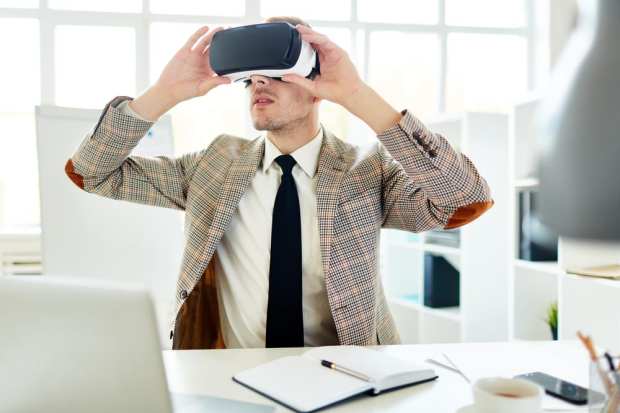How AR/VR Tech Is Reshaping Retail

Before consumers started to trade brick-and-mortar shopping experiences for eCommerce websites, retailers could bring customers through their doors with window displays. Now, with this shift, retailers are creating engaging experiences that digitally-connected consumers can tap into online with the help of virtual reality (VR) and augmented reality (AR) technologies.
Those tools have a wide range of applications — from helping customers see how furniture would look their living rooms to allowing them to see how a car would drive on the road. In addition, this technology can help train employees with virtual experiences. As these possibilities emerge, the hardware needed for many of these experiences is becoming more widespread.
According to the PYMNTS Virtual Reality In Retail Report, there are expected to be 100 million AR/VR headset users by 2022. These are some of the ways that retailers from Amazon to Walmart are tapping into headsets — and other technology — to serve digitally-connected consumers and help train employees:
The number of people using VR technology jumped from 85 million to 171 million in 2018. And consumers can use this technology to help shop for furniture. Amazon, for instance, is launching an Amazon Showroom feature that takes advantage of virtual reality tools. With the new functionality, shoppers can put 3D images of furniture into a virtual room in order to see how those items would really look. At the same time, the colors of the walls in the room can be changed, along with the flooring and carpet. Amazon, however, is not the only retailer using virtual reality for furniture and room furnishing sales. Wayfair, too, launched an interior design and room planning app called Wayfair Spaces. With the feature, shoppers can use items for designed rooms to see how they would look in their homes with the help of mixed reality.
The approximate number of AR/VR headsets shipped in the first quarter of 2018 was 1.2 million. Some of those headsets are arriving at brick-and-mortar stores to help with employee training and development. In September, it was reported that Walmart was planning to send four Oculus VR headsets to each Walmart Supercenter as well as two units to every Neighborhood Market and discount store. The aim was to give each associate access to the same training that managers and department managers receive at the Walmart U.S. Academies. In a blog post at the time, Walmart Senior Director of the Academies Andy Trainor said that the technology makes learning into an experience. Trainor wrote, “When you watch a module through the headset, your brain feels like you actually experienced a situation.”
Approximately 50 Macy’s locations have smart mirrors installed. In September, it was reported that the retailer was letting customers “try on” 250 makeup products with virtual mirrors. In addition, it was reported that the mirror could let customers order and pay for their makeup products. The news came a few months after it was reported that H&M was rolling out a voice-activated mirror in a flagship New York City location. H&M’s device was said to offer selfies and style recommendations as well as a route to eCommerce.
The revenues from VR software are expected to increase by 3,000 percent over the next four years. And companies in the VR space are raising tens of millions in funding. German company Varjo Technologies, for instance, announced a $31 million Series B investment last year, led by Seimens-backed Next47 and Atomico that would help it roll out the world’s first human-eye resolution virtual reality and mixed reality product. Varjo Co-Founder and CEO Urho Konttori said in a press release at the time, “We hope that the impact of our hardware and software platform on industry will be as profound as the introduction of the Graphical User Interface.” The company is already working with Airbus, Audi, Lilium, Saab, Sellen, Volkswagen and Volvo Cars to optimize the headset for their business sectors and needs.
The expected number of AR/VR headset users by 2022 is forecasted to be 100 million. Not all VR retail experiences, however, require a headset. Six Hundred Four, for instance, is a VR sneaker store. The company’s eCommerce shoppers can virtually “walk” around the company’s flagship space, which serves both as an art gallery and as a shoe store, and add items to their shopping carts without using a headset. Six Hundred Four Founder James Lepp said last year, “We didn’t want to have those constraints. Instead, our experience can be used anywhere, any time, on any device.”
From Walmart to Amazon, retailers are experimenting with the emerging technology to help shape the experiences of shoppers. In an age where retailers need to find engaging alternatives to traditional strategies like window displays, virtual reality and augmented reality could help retailers reach consumers now — and heading into the future.
